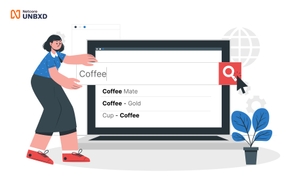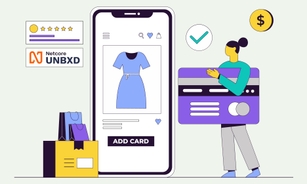- ProductsSearch and BrowseRecommendationsCustomer Engagement


Temple Grandin famously said, "My mind sort of works like a search engine. You ask me something, and I start seeing pictures." True story!
Today, the internet has become the final frontier in our search for almost anything we want. But how do you know what you are measuring is accurate if your search is already broken in the first place? Search engines have become powerful weapons of information.
We are evolving and driving our need for information to satisfy our limitless thirst for knowledge and cute kitten videos.
As an ecommerce store owner:
- Are you sure your site converts casual window shoppers to satisfied customers?
- Are you frustrated about your conversion rates?
If you've answered 'Yes,' this post is for you.
While metrics like Conversion Rates and Revenue per Query are statistics you need to know and improve, there is a lot more to this than meets the eye.
In this blog, I'll tell you how you can jump through the hurdles of a high bounce rate, avoid a stagnant Average Order Value (AOV), enhance your Click Through Rate (CTR), increase the ratio of products added to the cart, decrease cart abandonment rates, and improve the flow of inventory.
Conversion
Now, let's tackle the elephant in the room – Conversion.
As a merchandiser, you must know how to enhance the metrics beneath the surface. You need to figure out how to get more netizens to your store, get them to stay longer, spend more, and return for more. But how do you get more people to your store?
Suppose you've had a total of 1000 shoppers at your store today. And if your store is close to the global average conversion rate of 4.31% (Q2 – 2018), then only 40 people bought something from your site. Now, that's just not right! People are driven by psychology.
Having a site with high-resolution product images and graphics, an effective Live Chat system, an impartial buyer review system, and a reward system – like free shipping or an attractive referral bonus – should propel your conversion rates to double digits. Apart from this, studies have also shown an enhanced user experience resulted in proportionately higher conversion rates.
Pro-tip
You won't have to spend a lot on advertising if you have shoppers who are delighted with their experience on your site. Reward your shoppers' time in your store by getting them what they want, giving them a reason to stay, making it easier for them to rave about their experience, and incentivizing them when they refer new shoppers to your fold.
Happy Shopper = More money in your pocket = Happy Entrepreneur
Conversely, when your store isn't pleasing to the eye and tempting to their pockets, shoppers will take the nearest exit ramp to your competitor, and you've just whittled your money and business away.
Traffic
This brings me to the second metric you need to improve –Traffic.
So, you've enhanced your site and resurrected your conversion rates. They are now a whopping 12%! This means 120 shoppers have bought something from your store. That's an increase of 3x right there. Considering you don't do anything else to improve revenue, you'll still get more traffic from your site just by word of mouth.
While Search Engine Optimization (SEO) is ever-important, that's not enough. Social media platforms help your brand engage with people beyond physical boundaries. In a world that is always connected, social media allows influencers to convert passive consumers into diehard fans of your brand.
Pro-tip
For years, content and context played a large role in ranking pages. Millions of websites were optimized for search engines just by their content, while user experience took a backseat. Thankfully, that has changed, and search engines like Google now rank web pages by their user experience.
Revenue by the source of traffic
You don't have to be the best, just better than your nearest competitor. Now, how do you know your efforts are paying off? How do you know your loyal shoppers and social media influencers are adding new members to your brand's family?
That's why tracking your next metric –Revenue by the traffic source- is important.
When you know where your shoppers are coming from, you'll know where they're going. Knowing where they are from also helps you reach out to the staunchest ally of your brand while snipping sources that aren't working.
Pro-tip
Explore channels, even ones that may not work, and don't shy away from testing the waters to see which works best. Then, when you know what channels are bringing in your 'paying customers instead of window shoppers, you can calculate your true cost of doing business.
Customer Acquisition Cost(CAC)
Now, how much does it cost your business to get to 'acquire' a new customer? How do you calculate the Customer Acquisition Cost (CAC)?
As the name indicates, CAC is the average expense of gaining one customer. As an entrepreneur, there are a few ways you can lower your CAC:
- Invest in a strong referral program that rewards shoppers to refer
- Reduce the number of clicks it will take shoppers to search, navigate, and buy the product they want
- Identify and optimize proven revenue channels so that you ultimately spend less to acquire new customers.
Pro-tip
While CAC is important, many entrepreneurs don't do enough to keep customers. This could be partly because they don't measure the true cost of acquiring a customer to understand their Customer's Lifetime Value (CLV).
Customer’s Lifetime Value
How profitable is your business if your shoppers don't return to buy anything else? That's why measuring your CLV is as crucial as understanding the CAC. Customer's Lifetime Value estimates how much a shopper spends at your store throughout their retail life cycle.
It's calculated by subtracting the acquisition cost from their revenue.
Formulaically, CLV = Revenue earned- Acquisition cost.
Knowing how much your shopper will spend will help you calculate the money you can spend on acquiring and retaining new customers. But how do you improve your CLV? First, increasing the number of products shoppers buy every time they are online will increase the CLV. This translates to a higher Average Order Value (AOV).
Second, understanding what makes shoppers return will help you increase the Average Order Value (AOV). Third, encourage and reward brand loyalty by offering regular shoppers special discounts, referral bonuses, loyalty points on cards, exclusive previews, birthday/anniversary discounts, etc.
When shoppers are pampered and treated special, they become lifetime fans of your brand. An excellent example of this is Apple. The brand has created faithful legions of consumers who will buy anything Apple. Apple could do this in a short period only because of the value it created for its consumers.
Pro-tip
The keyword here is value. How are you adding value to your shoppers? Know what your shoppers want, put them over everything else, and create a retail experience that will wow them long after they log off your webpage. Continue to add value to their lives consistently, and you'll also make fans of your brand.
Percentage of returning customers
So, another sweet dilemma is how do you calculate the percentage of returning customers?
Seasoned entrepreneurs like yourself will know it's cheaper to keep a returning shopper than to acquire a new one. Sounds easy, right? Yes, but the ugly truth is shopping can get incredibly monotonous. You can do three things:
- Socialize the shopping experience
- Create offline meetups and masterclasses by experts for your loyal shoppers
- Create social forums outside your store so they can rant, rave, and celebrate as a community.
Pro-tip
Simply put, Percentage of Returning Customers = (Number of Returning Customers) / (Total Customers) x 100%.
Cart abandonment
This brings us to the number of shoppers who abandon their carts right before they check out. Otherwise known as Cart Abandonment, there are several reasons why a shopper will not complete the checkout process.
If your CA rate is close to the global average Cart Abandonment rate, then you have a real problem that needs the right solutions. Your shoppers could be exiting if:
- they don't trust your business or brand
- they feel your shipping costs are really high
- you don't offer convenient payment methods
- your checkout process is very convoluted
- they were just browsing
Figuring out why your shoppers are leaving your cart high and dry is half the solution. You can improve your cart abandonment rates by presenting your shoppers with a visual map of the checkout process so they know what lies ahead. Another way you can improve this is by removing all visual distractions or ads from the checkout page. Let's not bombard them with the information they don't need while checking out. Encourage your shoppers to complete the process by offering discounts on completing their orders.
Pro-tip
Sending a personalized email reminding the shopper of an incomplete order can encourage them to return, recover their cart, and complete their order.
Wrapping Up
So there you go. These are by no means the only reasons why your search is broken, but these are the top reasons why ecommerce entrepreneurs lose money. The good news is we at Unbxd know what it takes to fix a broken search system. Managing an online store can get complicated, but we have your answer. You can uncomplicate this when you customize our search platform for your eCommerce store.
At Unbxd, we dive deep into ecommerce businesses to observe and analyze shopper behavior to identify gaps and fix what's broken. Our expertise helps us showcase the value we bring to entrepreneurs like you and enables you to trust us with your online business.
If you are interested, book a demo.

